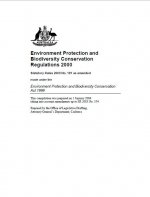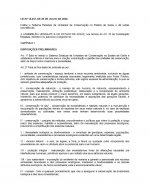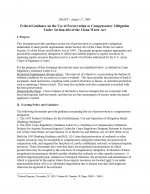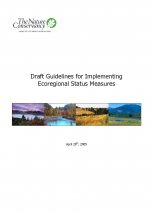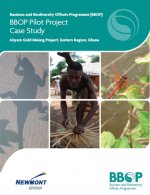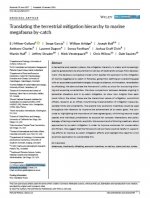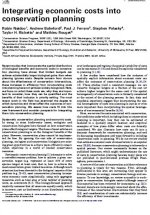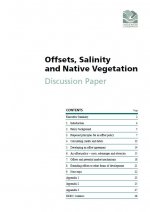Environment Protection and Biodiversity Conservation Regulations 2000: Statutory Rules 2000 No. 181 as Amended
Government of AustraliaFor paragraph (g) of the definition of nuclear action in subsection 22 (1) of the Act, a nuclear action includes establishing, significantly modifying, decommissioning or rehabilitating a facility where radioactive materials at or above the activity level mentioned in regulation 2.02 are, were, or are proposed to be used or stored.
Lei No 14.247, 29 Julho 2002
Government of BrazilEsta lei institui o Sistema Estadual de Unidades de Conservação no Estado de Goiás e estabelece critérios e normas para a criação, implantação e gestão das unidades de conservação, além de dispor sobre incentivos e penalidades.
Federal Guidance on the Use of Preservation as Compensatory Mitigation Under Section 404 of the Clean Water Act
Government of the United StatesThis document provides guidance on the use of preservation as compensatory mitigation undertaken to meet permit requirements under Section 404 of the Clean Water Act and/or Section 10 of the Rivers and Harbors Act of 1899. The permit program requires appropriate and practicable compensatory mitigation to offset unavoidable impacts to aquatic resources by replacing aquatic […]
Draft Guidelines for Implementing Ecoregional Status Measures
The Nature ConservancyEcoregional status measures comprise a set of data about the viability, threat and conservation status of biodiversity within an ecoregion. Derived primarily from data generated by ecoregional assessments, these measures provide a snapshot of the status of biodiversity conservation, as well as a measure of trends in this status over time.
Newmont Mining Biodiversity Offset Case Study – 2009
Case study of Newmont Mining BBOP pilot biodiversity offset at the Akyem gold mine, Ghana. Published in 2009.
Biodiversity offsets: relative offsetability of impacts.
Unpublished report to the New Zealand Department of Conservation. The Biodiversity Consultancy Ltd.: Cambridge, UK.
The Biodiversity ConsultancyThis report has been prepared for the Biodiversity Offset Program (BOP) of the New Zealand Department of Conservation to help advance offset thinking in New Zealand and as a contribution to the Business and Biodiversity Offset Programme1, of which BOP is a member. Given the pioneering nature of the subject, it is not intended as […]
Translating the terrestrial mitigation hierarchy to marine megafauna by-catch
In terrestrial and coastal systems, the mitigation hierarchy is widely and increasingly used to guide actions to ensure that no net loss of biodiversity ensues from development. We develop a conceptual model which applies this approach to the mitigation of marine megafauna by-catch in fisheries, going from defining an overarching goal with an associated quantitative […]
Inegrating economic costs into conservation planning
Robin Naidoo, Andrew Balmford, Paul J. Ferraro, Stephen Polasky, Taylor H. Ricketts, Mathieu Rouget - Conservation Science Program,, Conservation Science Group, Department of Economics, Department of Applied Economics, Conservation Science Program, South African National Biodiversity InstituteRecent studies that incorporate the spatial distributions of biological benefits and economic costs in conservation planning have shown that limited budgets can achieve substantially larger biological gains than when planning ignores costs. Despite concern from donors about the effectiveness of conservation interventions, these increases in efficiency from incorporating costs into planning have not yet been […]
Offsets, Salinity and Native Vegetation: Discussion Paper
Government of AustraliaThis discussion paper examines whether, and how, the negative impacts of clearing native vegetation might be offset by separate actions that have positive impacts. Offset actions could include improving the management of existing native vegetation, restoring or regenerating an area of degraded vegetation, or revegetating a previously cleared area.
Managing NATURA 2000 Sites: The Provisions of Article 6 of the Habitats’ Directive 92/42/CEE
European UnionThe first chapter of Directive 92/43/EEC, comprising Articles 1 and 2, is entitled Definitions. This chapter sets out the aim of the directive which is to contribute towards ensuring biodiversity through the conservation of natural habitats and of wild fauna and flora in the European territory of the Member States to which the Treaty applies […]


